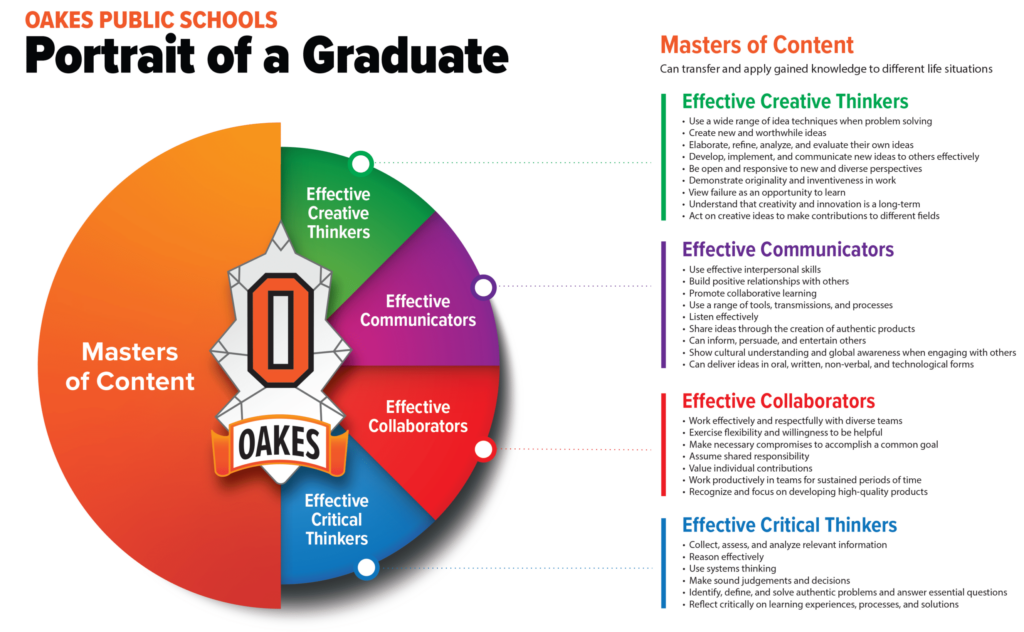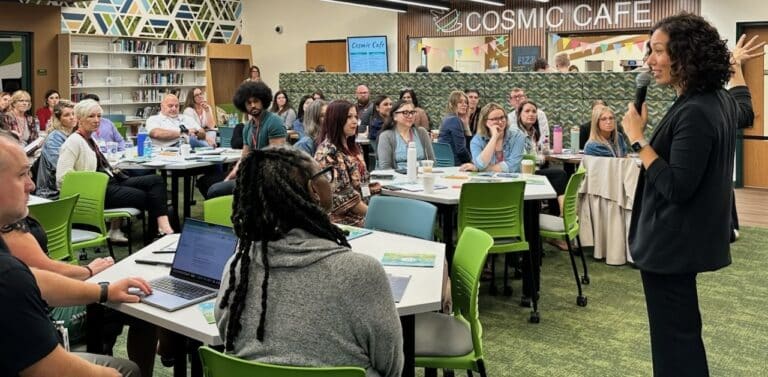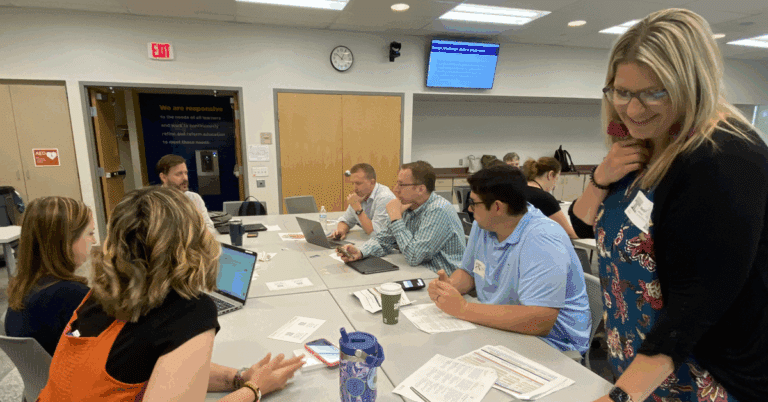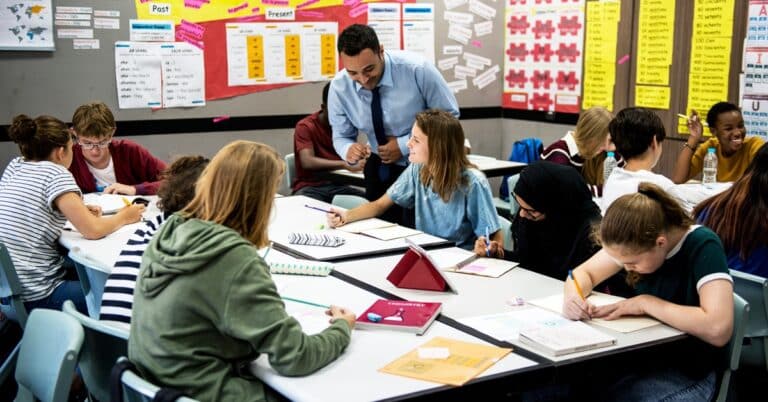When educators and district leaders at Oakes Public Schools in Oakes, North Dakota, developed their Portrait of a Graduate, they knew they wanted it to be a guiding document, something that would actually inform teaching and learning in their schools.
Who’s at the table?
The skills the Oakes design team, which included community members as well as teachers and parents, identified and solicited feedback on were that their graduates would be:
- Masters of content
- Effective creative thinkers
- Effective communicators
- Effective collaborators
- Effective critical thinkers
Implementation: starting with what’s already there
The next step was to begin to find ways to make their portrait live and breathe.
“Our fear was that we would put it out there and teachers would find it daunting, thinking their students had to be able to do all of these things without knowing how to assess or help them achieve these skills,” said Kalyn Haafke, a seventh, eighth and ninth grade English Language Arts teacher and a member of the district’s design team as part of their work in North Dakota’s push to personalize learning. “We wanted to ease the transition into using the portrait.”
One of the ways that Haafke and one of her fellow educators, Spanish teacher and Technology Integration Specialist Leslie Dethlefsen, wanted to make the Portrait more accessible was to integrate the skills into their criteria for Student of the Month.
“Before we had the portrait of a graduate, we were just picking kids who were behaving in class. Now, we’re using four of the categories we identified in our Portrait of a Graduate: effective creative thinkers, effective communicators, effective collaborators and effective critical thinkers,” said Haafke. “It makes it more purposeful. When teachers send nominations to me, it’s easier for them to be able to nominate with an example that matches a student up with one of these criteria. They’re giving an example of how a student show they’re building positive relationships or demonstrating a growth mindset in their classroom on a daily basis.”
The criteria for Student of the Month are displayed throughout the school along with the Portrait of a Graduate, so students and teachers alike can see the correlation. Haafke and Dethlefsen also make a point to notify those students who were nominated, but not chosen, about the behaviors that earned them a nomination.
“We like to recognize them and let them know, your teachers see you as being an effective communicator and a respectful person,” said Haafke. “They might not have won, but they were nominated. We want to give them that feedback of the skills that we’re noticing and boost their confidence.”
Because of her work on the design team and in the process of creating the portrait of a graduate, Haafke is already considering how to incorporate these skills into her lesson plans, providing opportunities for her students to demonstrate the behaviors Oakes educators hope to see every student graduate having mastered. Supporting her peers in doing the same is work she sees herself doing within the next few years.
“The student of the month criteria was just our way of introducing the skills in the portrait of the graduate,” said Haafke. “Right now we’re working on some rubrics for how we can assess these skills in the classroom, how we can help build these skills with our students and show them where they’re at.”
This was written by former Senior Manager of Communications Jillian Kuhlmann.







